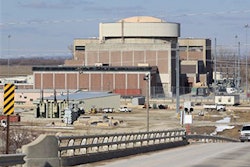This article originally appeared in the July/August 2013 issue of Food Manufacturing.
The Food Manufacturing Brainstorm features industry experts sharing their perspectives on issues critical to the overall food industry marketplace. In this issue, we ask: What steps can food manufacturers take to reduce energy costs?
1. Continuously check your basic systems for new technology. Food manufacturing facilities often have the following basic systems: compressed air, hot water, steam systems, lighting and HVAC. Consider new LED lights in place of fluorescents or adding VFDs to larger electric loads. Today’s technology is advancing so rapidly with regard to energy reduction that we recommend a periodic review of these systems — perhaps every 12 to 18 months. What was installed even just a few years ago should be re-examined and possibly upgraded.
2. Cooling load energy reduction. Food manufacturing facilities which produce perishable products require some type of refrigeration systems. Whether the refrigeration is required to cool, freeze or simply store products, the associated equipment may involve several thousand horsepower. Energy users this large offer numerous opportunities for energy savings.
SSOE engineers with refrigeration design and operating experience are able to perform an evaluation of a system that targets energy savings and utility incentive opportunities. This assessment begins with an evaluation of existing system operating conditions as well as capacity requirements, equipment selections and pipe sizes. The control strategy for refrigeration systems is also evaluated for opportunities to reduce energy consumption through condenser fan and pump cycling, compressor staging, reduced discharge pressure operation, defrost timing and methods, use of variable frequency drives and adjustments for seasonal operating conditions.
An energy assessment may take several days to several weeks, depending on the size of the system and the accuracy of system documentation and drawings. SSOE has found that the engineering costs for these services typically will total only a fraction of energy savings.
3. Utility incentives. Numerous electric and gas suppliers offer rebates and other incentives to reduce energy consumption. Switching to an interruptible gas supply for boilers and adding a back-up fuel may present an attractive option for consideration.























